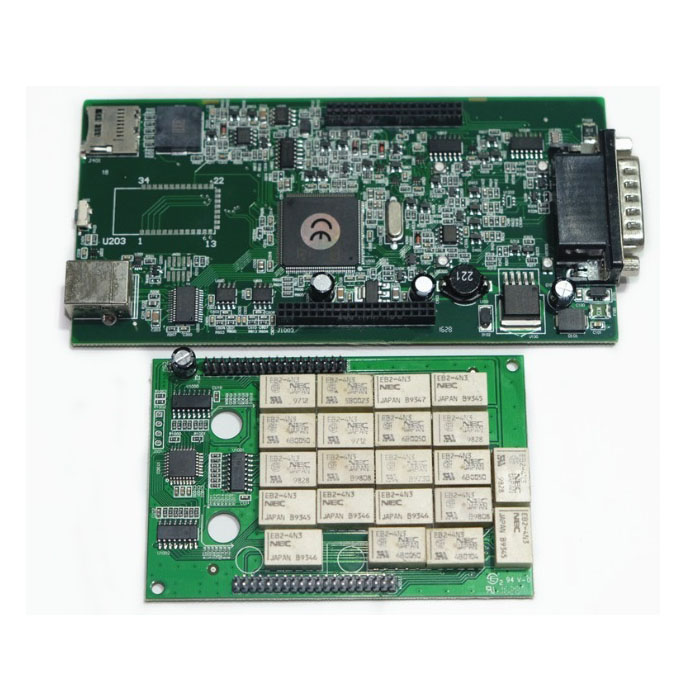Automotive Electronic Control Boards: The Brain of Modern Vehicles
2025-04-17
In today’s vehicles, technology is advancing at an incredible rate, making cars smarter, safer, and more efficient. At the heart of this revolution is the Automotive Electronic Control Board, a crucial component that serves as the “brain” of many vehicle systems. These control boards manage everything from engine performance to safety features, and they play a pivotal role in how modern vehicles operate.
What is an Automotive Electronic Control Board?
An Automotive Electronic Control Board (ECB) is an integrated circuit board that controls various electrical functions within a vehicle. It contains a collection of microprocessors and other electronic components designed to receive inputs from various sensors, process data, and then send commands to the relevant systems or actuators in the vehicle. These systems could range from the engine control module (ECM) to climate control systems, infotainment, safety mechanisms, and even driver assistance systems.
Key Functions of Automotive Electronic Control Boards
Automotive electronic control boards are responsible for managing and regulating many of a vehicle’s key operations. Some of their primary functions include:
1. Engine Management: The control board helps regulate the engine’s performance by processing data from sensors such as oxygen sensors, air temperature sensors, and fuel pressure sensors. This ensures that the engine operates efficiently, improving fuel economy and reducing emissions.
2. Transmission Control: Modern vehicles use electronic control boards to manage transmission systems, ensuring smooth gear shifts and optimal engine performance. The control board processes input from the vehicle’s transmission sensors and adjusts accordingly.
3. Infotainment Systems: The control board plays a key role in managing entertainment and information systems within the vehicle, including navigation, music, and connectivity with smartphones. It integrates various interfaces and controls to ensure seamless operation.
4. Safety Systems: Safety features such as airbags, ABS (Anti-lock Braking System), stability control, and collision detection systems rely on electronic control boards to function correctly. The board processes input from sensors, evaluates potential risks, and activates the appropriate safety systems to protect the occupants.
5. Climate Control: Electronic control boards also manage the vehicle's climate control system, regulating the temperature and airflow within the cabin. This ensures that the interior of the vehicle remains comfortable regardless of external conditions.
6. Advanced Driver Assistance Systems (ADAS): In modern vehicles, electronic control boards are integral to the operation of ADAS, which includes features such as lane-keeping assist, adaptive cruise control, parking sensors, and automated braking systems. These systems enhance driver safety and make driving easier and more enjoyable.
How Automotive Electronic Control Boards Work
The operation of an automotive electronic control board can be broken down into several steps:
1. Data Collection: Various sensors in the vehicle continuously collect data from the environment and the car’s internal systems. These sensors monitor parameters such as speed, fuel levels, engine temperature, tire pressure, and more.
2. Data Processing: The control board’s microprocessors process the collected data and make decisions based on pre-programmed algorithms. For instance, the board might adjust fuel injection timing to optimize engine performance or activate the air conditioning when cabin temperature rises above a certain threshold.
3. Command Output: Based on the data processing, the electronic control board sends out commands to the appropriate vehicle systems. This could mean adjusting the throttle position, triggering an airbag deployment in the event of a collision, or providing feedback to the driver through the dashboard display.
4. Feedback Loop: The system continuously monitors the effects of its commands and adjusts operations as needed. This creates a feedback loop that ensures optimal vehicle performance, safety, and comfort.
Benefits of Automotive Electronic Control Boards
The widespread use of electronic control boards in vehicles has brought about several important benefits:
- Improved Fuel Efficiency: By managing engine parameters more precisely, electronic control boards can optimize fuel usage, leading to better fuel efficiency and lower emissions.
- Enhanced Safety: With the integration of safety systems like airbags, ABS, and stability control, electronic control boards help prevent accidents and protect passengers during collisions.
- Better Vehicle Performance: Electronic control boards allow for finer control over various vehicle systems, resulting in smoother operations, better handling, and an overall improved driving experience.
- Increased Convenience: Modern vehicles often come with high-tech features such as navigation, voice controls, and advanced driver assistance. These systems are powered by the same electronic control boards, providing a higher level of convenience for the driver.
- Adaptability to New Technologies: As automotive technologies evolve, electronic control boards can be updated or reprogrammed to accommodate new features and functionalities, making vehicles future-proof to some extent.
The Future of Automotive Electronic Control Boards
As the automotive industry continues to innovate, the role of electronic control boards is only set to grow. With the advent of electric vehicles (EVs), autonomous driving, and more sophisticated ADAS systems, the demand for advanced control boards is expected to increase.
Future electronic control boards will likely feature even greater computational power and enhanced connectivity, enabling vehicles to interact seamlessly with other devices, infrastructure, and even other vehicles. This connectivity will be key in making self-driving cars a reality, as control boards will need to process data from an array of sensors and make real-time decisions to navigate roads safely.
Additionally, the trend toward sustainable automotive solutions will drive innovation in control boards for electric vehicles, ensuring that battery management systems, energy efficiency, and power distribution are optimized for maximum performance.
Conclusion
Automotive electronic control boards are the unsung heroes behind the seamless operation of modern vehicles. From engine management to safety features, infotainment, and driver assistance systems, these control boards ensure that vehicles perform at their best. As technology continues to advance, the importance of these control boards will only increase, helping to shape the future of driving with smarter, safer, and more efficient vehicles.



